Exactly 2222 Estonian islands are said to exist in the Baltic Sea. Many people do not know that Estonia has such a large number of islands. So it’s high time to introduce them to you in more detail and to dedicate a separate article to them. How to get to the islands, you can learn in this article in the section “Ferries”.
Estonian Islands – Overview, Facts and Figures
Don’t worry, we won’t introduce you to all 2222 islands here. Most of them are quite small and uninhabited. Only 29 of them are even larger than 1 km² and only on 19 islands people live at all. The islands are divided into three island groups.
West Estonian archipelago
The largest Estonian islands are located west off the Estonian coast. They are separated from the mainland by Moonsund, which in Estonian is called Väinameri. This can be translated as “strait sea”. The water here is not very deep and in the past this part of the Baltic Sea was feared by captains. Today, of course, you don’t have to be afraid when you take a ferry to the islands. The islands here have a total area of about 4000 km². The biggest of them are Saaremaa, Hiiumaa, Muhu and Vormsi. We will introduce you to all of them here.
The islands of the West Estonian archipelago are a microcosm of their own. They have their own traditions and the landscape with its lighthouses and windmills is one of the most beautiful in the country. Together with Saarema and some other islands, Muhu, Hiiumaa and Vormsi are even part of a UNESCO biosphere reserve.
The islands of the Bay of Riga
South of the West Estonian archipelago lies the Bay of Riga, at the southern end of which the Latvian capital is located. Here, on the Gulf of Riga, there are only a few islands. The largest of them are Manilaid, Kihnu and Ruhnu. Manilaid is located just off the Estonian coast, while Kihnu is already a bit further in the open sea. The distance between Ruhnu and the Estonian mainland is 70 kilometers, while the distance to the Latvian mainland in the west is only about 40 kilometers. Ruhnu and Kihnu are also presented below.
The East Estonian Islands
North of the Estonian mainland lies the Gulf of Finland. Here, in the border area between Russia, Finland and Estonia, there are only a few inhabited islands, including the Russian Kotlin near Saint Petersburg. The largest Estonian islands are the Pakri group of islands, used by the Soviets as bomb test sites, Naissaar, Prangli, Osmussaar and Aegna. Very few people live here and for a vacation we rather recommend other Estonian islands.
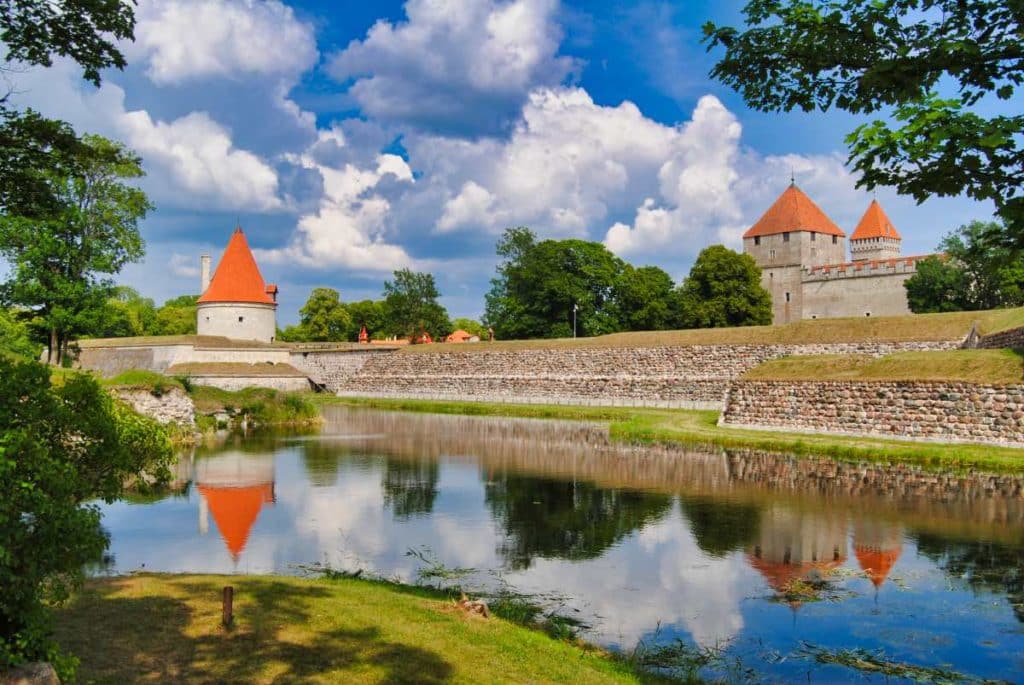
Saaremaa
Saaremaa (German name: Ösel) is with its 2672 km² the fourth largest island in the Baltic Sea and almost three times as big as German Rügen. The island is very well developed and therefore made for a relaxing vacation. The mostly flat island also has some steep coasts like the Panga Pank. The fascinating thing about Saaremaa is the combination of nature and man-made sights. Here you can observe different species of seals, but also bears live on the island. You can make exciting discoveries in the capital Kuressaare (Arensburg). The bishop’s castle there is one of the most popular destinations on the island. But also windmills, lighthouses and a mystical meteorite crater are worth a vacation on Saaremaa, which we present to you in a separate article.
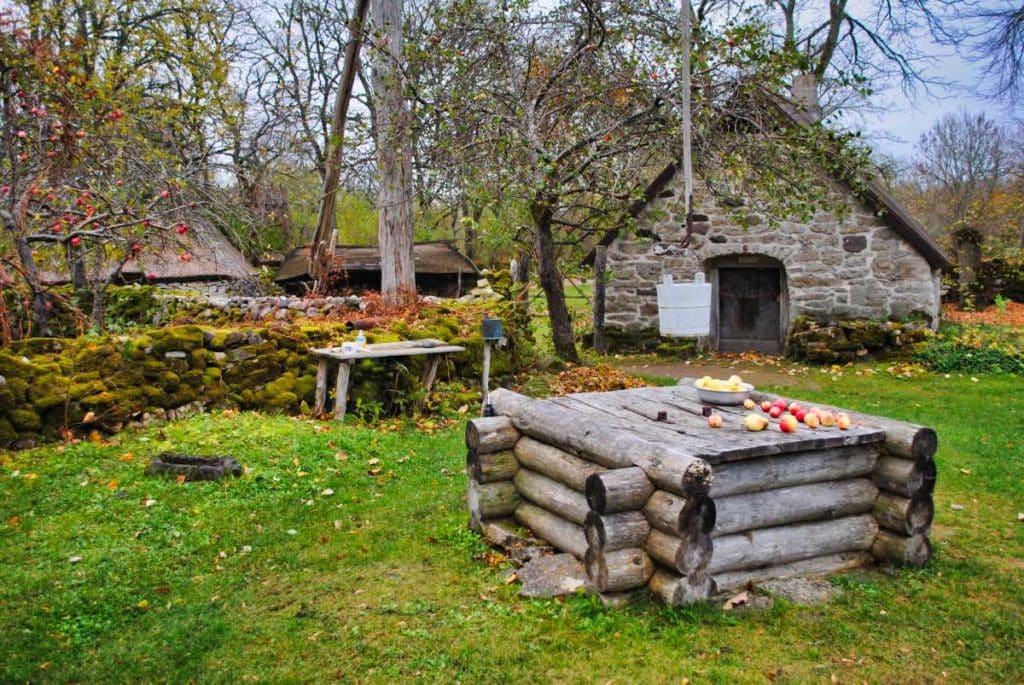
Muhu
The Estonian island of Muhu is located exactly between Saaremaa and the mainland and can be reached by ferry from Virtsu on the mainland. Muhu is connected with Saaremaa by a causeway, the distance between the two islands is less than three kilometers. However, the people on Muhu are very reluctant to be seen as an appendage of Saaremaa. And it would be a mistake not to visit the island. Although only about 1500 people live here, the beautiful nature, including the cliffs in the north, and especially the many historic windmills and smaller attractions such as an ostrich farm still attract many visitors here.
Koguva Museum Village
But the highlight of a visit to Muhu for most is Koguva. This is where Estonian writer Juhan Smuul was born in 1922. His house and homestead have been transformed into a beautiful museum village where you can learn about the traditional way of life on the island. Of course, there are several windmills here, but also an art gallery, a historical school and much more.

Hiiumaa
The Estonian island Hiiumaa is the second largest Estonian island after Saaremaa with an area of about 1000km² and is located north of its big sister. You can reach Hiiumaa by ferry from Saaremaa or from the mainland. In winter it can happen that the Moonsund freezes over, then you can even drive over the ice by car! Hiiumaa consists of more than 60% forests, but also some swamps can be found here. Above all, Hiiumaa is known for its lighthouses, which could hardly be more different, but are all very worth seeing and make beautiful photo motifs.
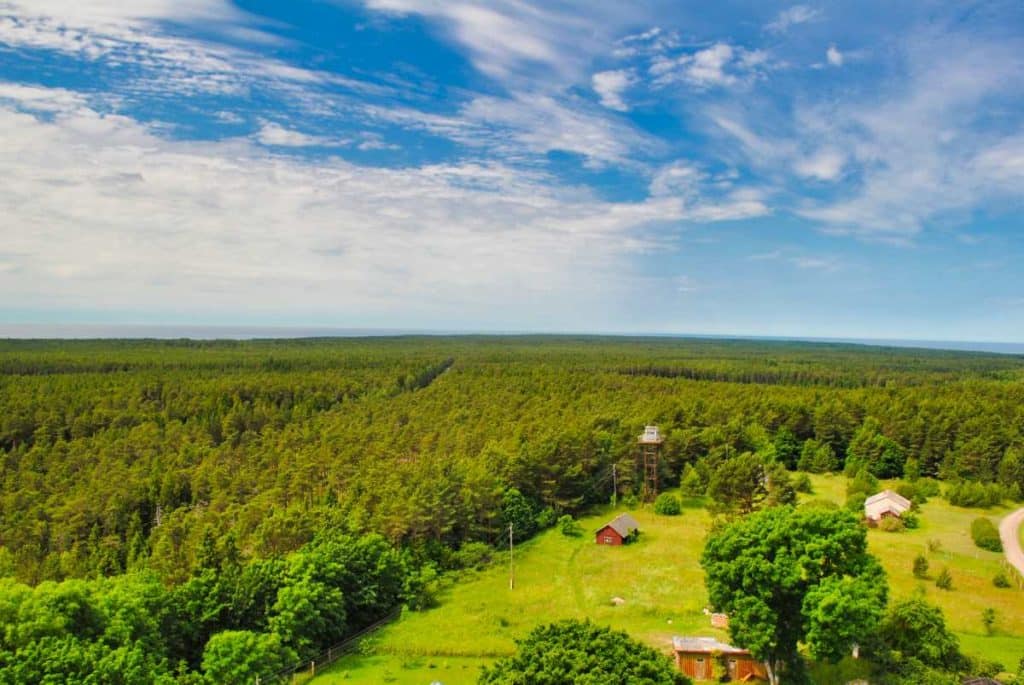
Kõpu Peninsula
One of the island’s landmarks is Kõpu tuletorn, the third oldest lighthouse in the world still in operation! Since the 16th century it has been reliably performing its service, overlooking the coast off the narrow peninsula of the same name in western Hiiumaa. At its tip, the bright red Ristna tuletorn is another very photogenic lighthouse. The old Soviet military installations, which are slowly being reclaimed by nature, also make for exciting discoveries. In addition, Kõpu is a real surfer’s paradise, so variety is guaranteed here!
Tahkuna Peninsula
There is a second peninsula on Hiiumaa. And of course, a lighthouse should not be missing here either. The white Tahkuna teletoren does not look very spectacular, but it has an eventful history: it was commissioned at the World Exhibition in Paris, where the Russian representatives were enthusiastic about its functionality. After several parts were built in France, they were assembled on Tahkuna and the lighthouse was ready. On Tahkuna there is also a monument commemorating the Estonia disaster. In 1994, the ferry of the same name sank on its way from Tallinn to Stockholm. 852 people were killed in the biggest European shipping disaster since World War II.
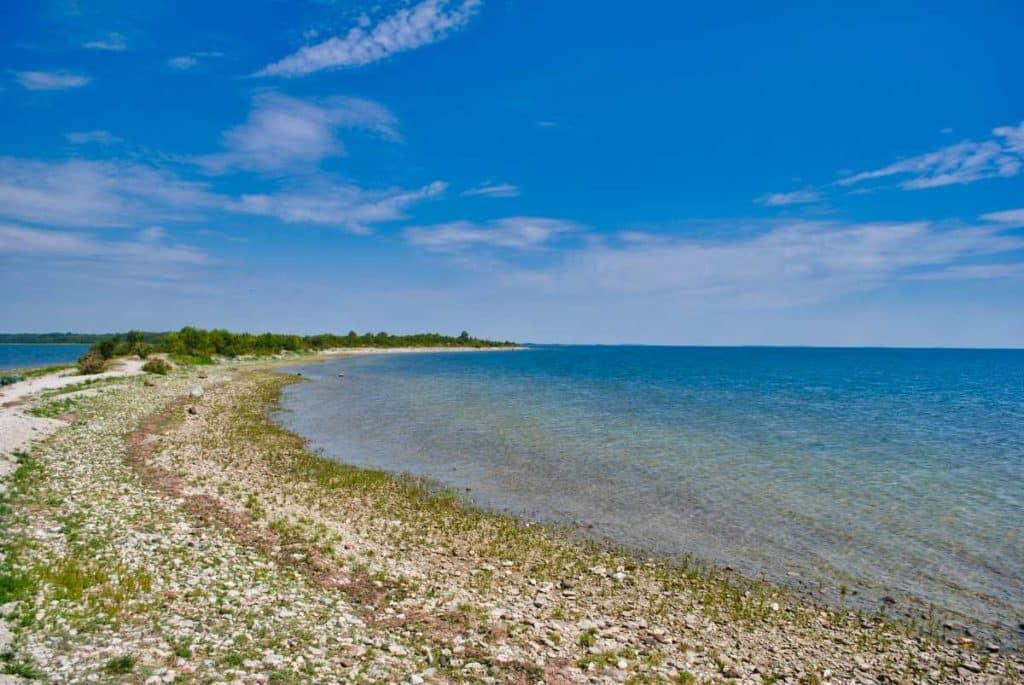
Sääre tirp
Sääre tirp is a narrow headland on the southern coast of Hiiumaa and ideal for a long walk. With the sea on both sides, you first walk through beautiful bush and tree vegetation, which becomes increasingly sparse until you finally stand on a narrow gravel strip in the middle of the Baltic Sea. On the way to the hikers’ parking lot, you will come across a giant beforehand, or at least a statue of a giant. It shows the mythical forefather of the island Hiiumaa, who drags stones to build a bridge. In the picture above you get a good impression of the beauty of this place.
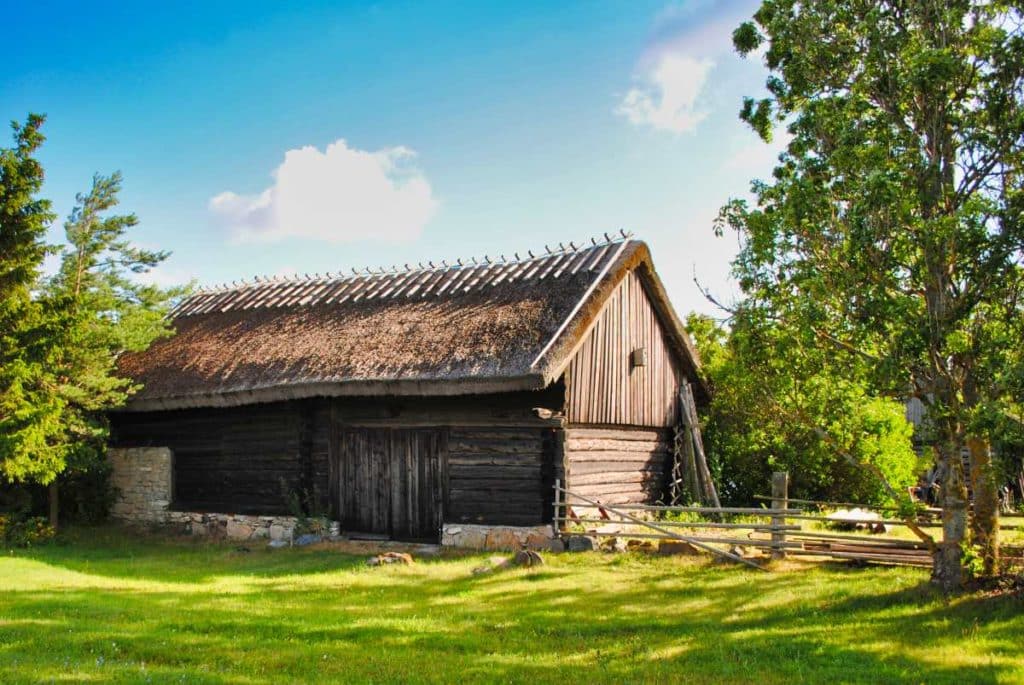
Vormsi
East of Hiiumaa lies Vormsi (Worms). With its 92 km² it is the fourth largest Estonian island, but already much smaller than Muhu. From the mainland Vormsi is quite easy to reach. Several times a day ferries bring you here from Rohuküla near Haapsalu on the mainland, which is only ten kilometers away from Vormsi. The island has a noticeable Scandinavian touch, which is due to the fact that Swedes were the majority population here until the Second World War.

A mysterious cemetery
If you are on Vormsi, you should definitely visit Hullo, the island’s capital. Here is the island church from the 17th century, but above all the trip is worth it because of the island cemetery. There are over 300 old Celtic crosses here, which you would expect to find in Ireland or Scotland. Some of them are half sunk into the ground and give the place an almost mystical aura.

Kihnu
It was beautiful on the islands in the Western Estonian Archipelago. But we also want to introduce you to the islands in the Bay of Riga. Kihnu is located about 10 kilometers off the Estonian coast and is easily accessible by ferry from the mainland. You can travel here from Pärnu and combine your visit to the island with a vacation in the Estonian summer capital. Kihnu is especially interesting from a cultural point of view, because its inhabitants have formed their own culture, which is reflected in the local costumes and music. In the Kihnu Museum you will get a good insight into the local way of life and the history of the island.
On the road on the travel ring
The most comfortable way to explore the island is on the Kihnu Reesuratas (Travel Ring), which connects the most beautiful places on the island. Our tip: Spend a night on Kihnu and rent a bike, because to explore the historic villages of Lemsi, Roostiküla, Linaküla and Sääre Küla, you have to cover 23 kilometers. On the way, you will see a varied landscape, a beautiful harbor, beaches, lighthouses and historic farms.
Ruhnu
The Estonian island of Ruhnu exudes a real high seas feeling, because the island is very isolated in the north of the Bay of Riga and is surrounded far and wide only by water. The island’s isolated location has led the Swedes who originally lived here to develop their own dialect, the so-called Runsk.
Sweden, Latvia or Estonia?
The history of Runsk holds some peculiarities. After the collapse of the Tsarist Empire, the inhabitants of the island asked the Swedish king to allow them to join Sweden. The king refused and the inhabitants had to decide whether they wanted to join the newly founded states of Latvia or Estonia. They chose Estonia because there was a larger Swedish minority there. And so today the island is still part of Estonia, although it is actually much closer to Latvia.
Wooden churches and a lighthouse created by famous hand
Although today only about 60 people live on Ruhnu, the island has its own airport, which ensures the supply of the population. A special feature is the island’s lighthouse, designed by none other than Gustave Eiffel, the architect of the Eiffel Tower in Paris. But also the wooden church of St. Magdalenen from the 17th century is a real eye-catcher. Otherwise, the island is also suitable for a relaxing beach vacation away from the tourist crowds. And in the Ruhnu Museum you can learn about the island’s eventful history.
No products found.
No products found.
No products found.
No products found.
No products found.
We hope you enjoyed our trip to the Estonian Baltic Sea islands. What is your favorite place? Feel free to let us know and write us a comment!

